Technology
Samsung Galaxy S25 internal codename leak suggests major upgrades
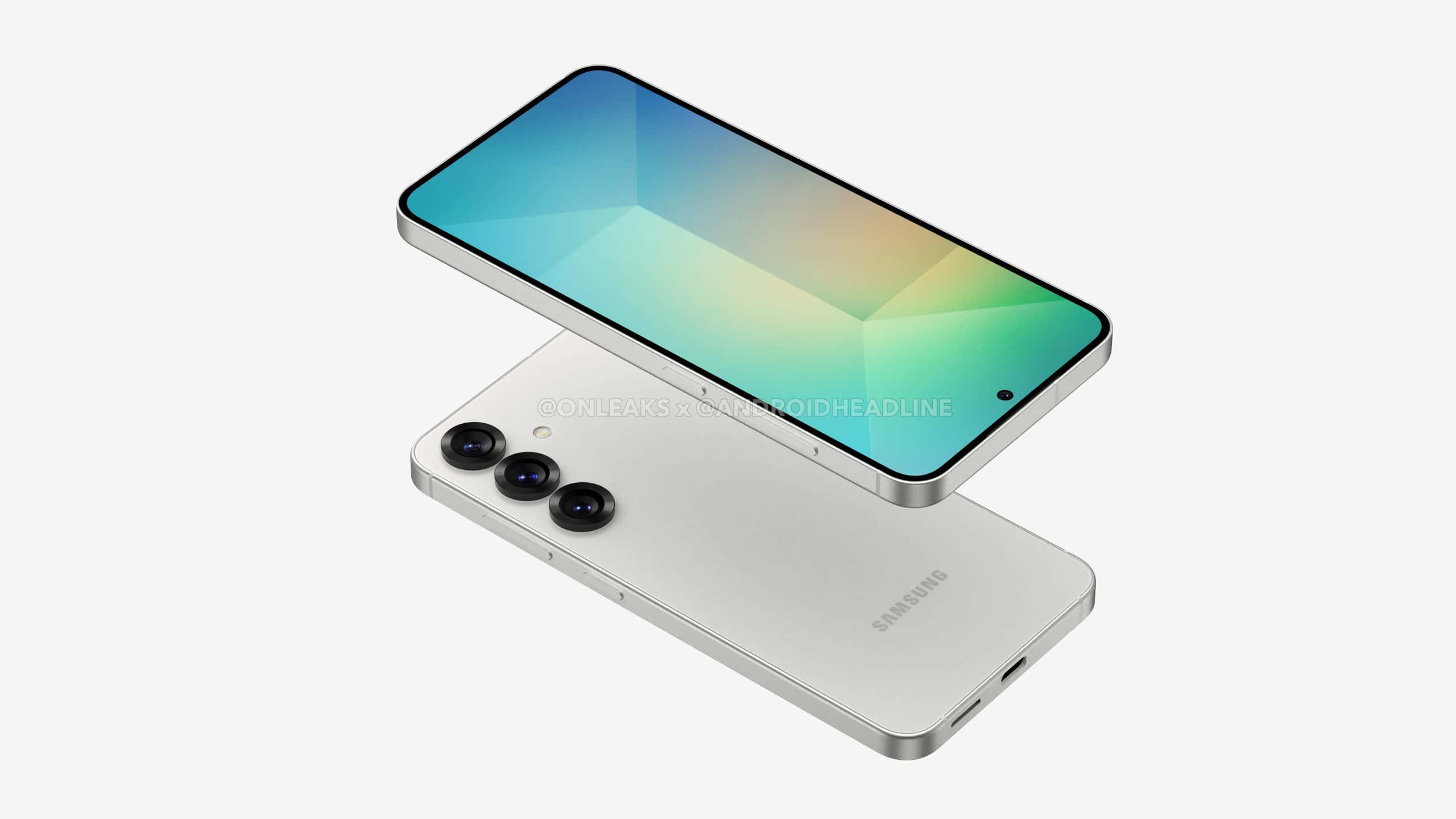
The internally used codename for the Samsung Galaxy S25 series has leaked online. It subtly suggests Samsung is planning a “paradigm” shift in specifications, features, and hardware.
What is the codename of the upcoming Samsung Galaxy S25 series?
Just like most leading smartphone manufacturers, Samsung too relies heavily on codenames for upcoming smartphones. This technique attempts to prevent information about hardware and specifications from leaking.
Samsung internally referred to the Galaxy S23 as “Diamond”. The Galaxy S24 series was codenamed “Eureka”. According to the Galaxy Club, the upcoming Samsung Galaxy S25 series bears the codename “Paradigm”.
Samsung’s choice for the Galaxy 25 series is unusual and exciting because the company has ignored its conventional naming strategy. Alphabetically, Diamond is followed by Eureka. However, the codename Paradigm skips multiple letters.
The codename could be subtly hinting about a significant leap in terms of specifications of the Samsung Galaxy S25 series. In other words, Samsung’s upcoming smartphones could skip a few generations of hardware.
How will Samsung justify the codename?
Recent reports have indicated the Samsung Galaxy S25 series will consist of three models: the Galaxy S25, the Galaxy S25 Plus, and the Galaxy S25 Ultra. Going by past launch events, Samsung could announce these flagship smartphones early next year, presumably on January 13, 2025.
Some of the key specifications of the Samsung Galaxy S25 series have leaked, and they reaffirm that Samsung would embed cutting-edge technology and make no compromises on hardware.
Interestingly, it could be the design or shape of the Galaxy S25 smartphones that could justify the “Paradigm” codename. The top and bottom of the Galaxy S24 Ultra were flat, with the sides slightly rounded, but Samsung may ditched this design philosophy.
Recent leaks have claimed the Galaxy S25 Ultra will have a completely flat design, which appears to be inspired by the Pixel 9 or the iPhone 16, and camera rings.
Science & Environment
What caused the hydrothermal explosion at Yellowstone National Park? A meteorologist explains

Yellowstone National Park visitors were sent running and screaming Tuesday when a hydrothermal explosion spewed boiling hot water and rocks into the air. No one was injured, but it has left some wondering: How does this happen and why wasn’t there any warning?
The Weather Channel’s Stephanie Abrams said explosions like this are caused by underground channels of hot water, which also create Yellowstone’s iconic geysers and hot springs.
“When the pressure rapidly drops in a localized spot, it actually forces the hot water to quickly turn to steam, triggering a hydrothermal explosion since gas takes up more space than liquid,” Abrams said Wednesday on “CBS Mornings.” “And this explosion can rupture the surface, sending mud and debris thousands of feet up and more than half a mile out in the most extreme cases.”
Tuesday’s explosion was not that big, Abrams said, “but a massive amount of rocks and dirt buried the Biscuit Basin,” where the explosion occurred.
A nearby boardwalk was left with a broken fence and was covered in debris. Nearby trees were also killed, with the U.S. Geological Survey saying the plants “can’t stand thermal activity.”
“Because areas heat up and cool down over time, trees will sometimes die out when an area heats up, regrow as it cools down, but then die again when it heats up,” the agency said on X.
The USGS said it considers this explosion small, and that similar explosions happen in the national park “perhaps a couple times a year.” Often, though, they happen in the backcountry and aren’t noticed.
“It was small compared to what Yellowstone is capable of,” USGS Volcanoes said on X. “That’s not to say it was not dramatic or very hazardous — obviously it was. But the big ones leave craters hundreds of feet across.”
The agency also said that “hydrothermal explosions, “being episodes of water suddenly flashing to steam, are notoriously hard to predict” and “may not give warning signs at all.” It likened the eruptions to a pressure cooker.
While Yellowstone sits on a dormant volcano, officials said the explosion was not related to volcanic activity.
“This was an isolated incident in the shallow hot-water system beneath Biscuit Basin,” the USGS said. “It was not triggered by any volcanic activity.”
Technology
What happened to the Metaverse?

S6
Ep135

What happened to the Metaverse?
Host Andrew Davidson is joined by technology experts Brian Benway and Jan Urbanek in a discussion about the Metaverse. Our experts shed light on the latest technological and hardware advancements and marketing strategies from Big Tech. What will it take for the Metaverse to gain mainstream popularity? Listen now to find out!
Head over to Mintel’s LinkedIn to let us know what you think of today’s episode, and visit mintel.com to become a member of our free Spotlight community.
Visit the Mintel Store to explore all our technology research and buy a report today.
Meet the Host

Andrew Davidson
SVP/Chief Insights Officer, Mintel Comperemedia.
Meet the Guests

Brian Benway
Senior Analyst, Gaming and Entertainment, Mintel Reports US.

Jan Urbanek
Senior Analyst, Consumer Technology, Mintel Reports Germany.
Mintel News
For the latest in consumer and industry news, top trends and market perspectives, stay tuned to Mintel News featuring commentary from Mintel’s team of global category analysts.
More from Mintel
-
Mintel Technology Reports
Mintel’s Technology market research help you anticipate what’s next in the Technology industries….
-
Global Outlook on Sustainability: A Consumer Study 2024-25
Get the latest sustainability data, with insights on consumers, products and markets to inform your innovation strategy and build your sustainability strategy….
Podcast
2024-03-15T03:16:00+00:00
2024
0
Latest insights
June 6, 2024
In the exciting world of Artificial Intelligence (AI), prompts are instructions or queries you enter into the AI interface to get responses. If you want helpful responses, you…
November 28, 2023
Head over to Mintel’s LinkedIn to let us know what you think of today’s episode, and visit mintel.com to become a member of our free Spotlight community. Learn…
Download the Latest Market Intelligence
Science & Environment
Archaeologists make stunning underwater discovery of ancient mosaic in sea off Italy
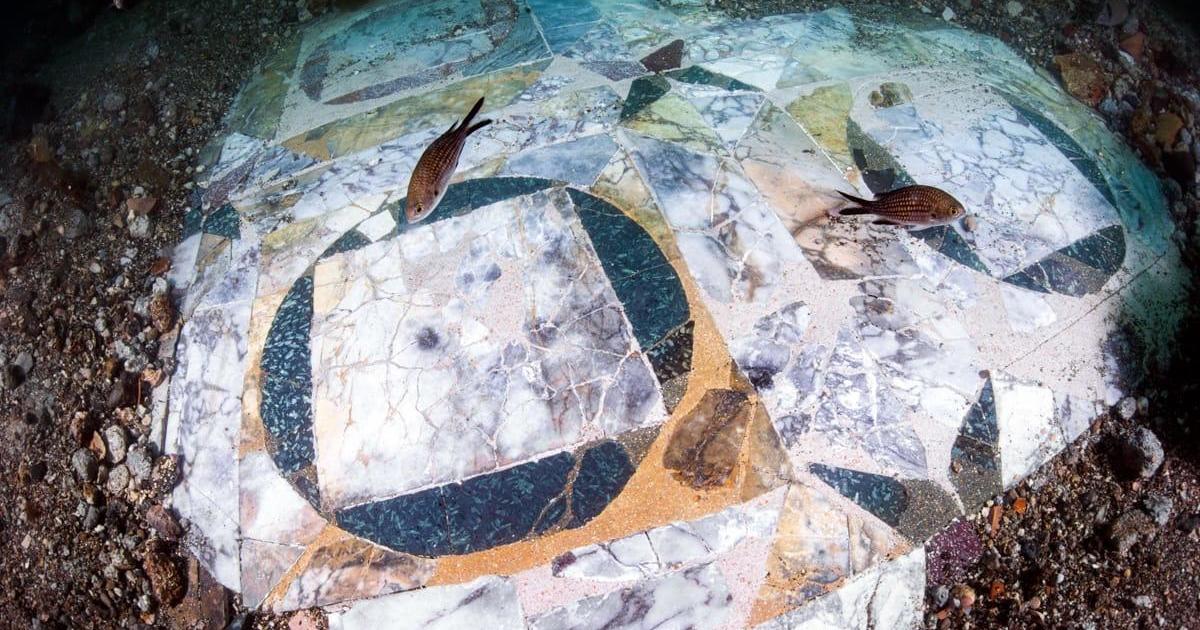
Researchers studying an underwater city in Italy say they have found an ancient mosaic floor that was once the base of a Roman villa, a discovery that the local mayor called “stupendous.”
The discovery was made in Bay Sommersa, a marine-protected area and UNESCO World Heritage Site off the northern coast of the Gulf of Naples. The area was once the Roman city of Baia, but it has become submerged over the centuries thanks to volcanic activity in the area. The underwater structures remain somewhat intact, allowing researchers to make discoveries like the mosaic floor.
The Campi Flegrei Archaeological Park announced the latest discovery, which includes “thousands of marble slabs” in “hundreds of different shapes,” on social media.
“This marble floor has been at the center of the largest underwater restoration work,” the park said, calling the research “a new challenge” and made “very complicated due to the extreme fragment of the remains and their large expansion.”
The marble floor is made of recovered, second-hand marble that had previously been used to decorate other floors or walls, the park said. Each piece of marble was sharpened into a square and inscribed with circles. The floor is likely from the third century A.D., the park said in another post, citing the style of the room and the repurposing of the materials as practices that were common during that time.
Researchers are working carefully to extract the marble pieces from the site, the park said. The recovery work will require careful digging around collapsed walls and other fragmented slabs, but researchers hope to “be able to save some of the geometries.”
Once recovered, the slabs are being brought to land and cleaned in freshwater tanks. The marble pieces are then being studied “slab by slab” to try to recreate the former mosaic, the park said.
“The work is still long and complex, but we are sure that it will offer many prompts and great satisfactions,” the park said.
Technology
SpaceX fires up Starship engines ahead of fifth test flight
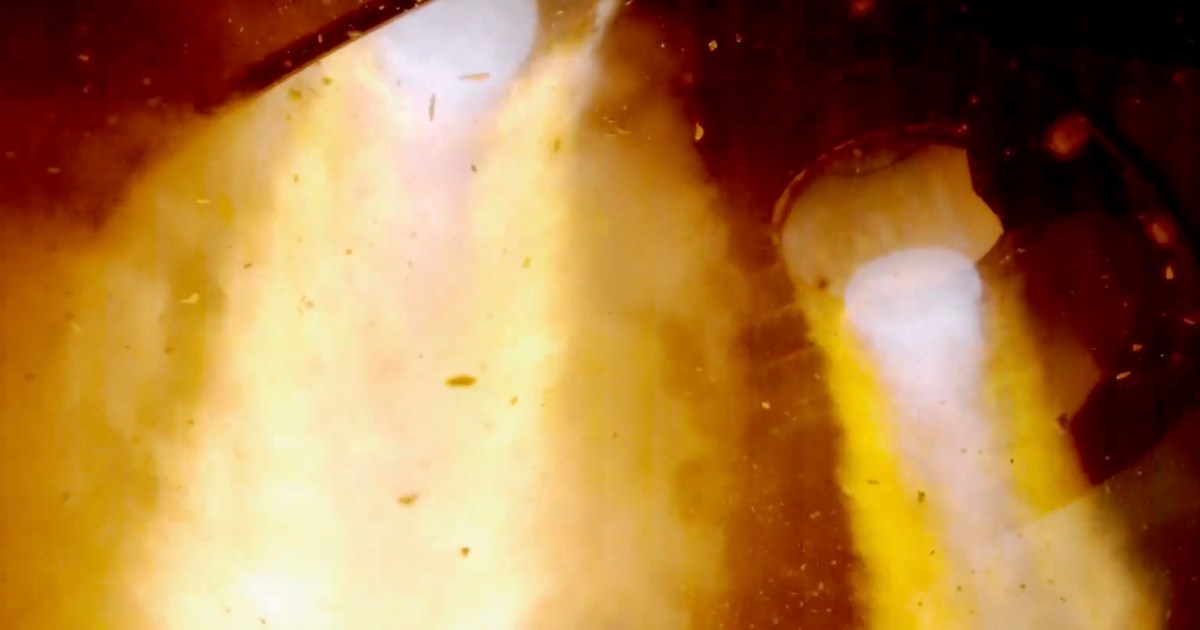

SpaceX has just performed a static fire of the six engines on its Starship spacecraft as it awaits permission from the Federal Aviation Administration (FAA) for the fifth test flight of the world’s most powerful rocket.
The Elon Musk-led spaceflight company shared footage and an image of the test fire on X (formerly Twitter) on Thursday. It shows the engines firing up while the vehicle remained on the ground.
Six engine static fire of Flight 6 Starship pic.twitter.com/fzJz9BWBn6
— SpaceX (@SpaceX) September 19, 2024
For flights, the Starship spacecraft is carried to orbit by the first-stage Super Heavy booster, which pumps out 17 million pounds of thrust at launch, making it the most powerful rocket ever built.
The Super Heavy booster and Starship spacecraft — collectively known as the Starship — have launched four times to date, with the performance of each test flight showing improvements over the previous one.
The first one, for example, exploded shortly after lift off from SpaceX’s Starbase facility in Boca Chica, Texas, in April last year, while the second effort, which took place seven months later, achieved stage separation before an explosion occurred — an incident that was captured in dramatic footage. The third and fourth flights lasted much longer and achieved many of the mission objectives, including getting the Starship spacecraft to orbit.
The fifth test flight isn’t likely to take place until November at the earliest, according to a recent report. It will involve the first attempt to use giant mechanical arms to “catch” the Super Heavy booster as it returns to the launch area. SpaceX recently expressed extreme disappointment at the time that it’s taking the FAA to complete an investigation that will pave the way for the fifth Starship test, and has said that it’ll be ready to launch the vehicle within days of getting permission from the FAA.
Once testing is complete, NASA wants to use the Starship, along with its own Space Launch System rocket, to launch crew and cargo to the moon and quite possibly for destinations much further into space such as Mars. NASA is already planning to use a modified version of the Starship spacecraft to land the first astronauts in five decades on the lunar surface in the Artemis III mission, currently set for 2026.
Science & Environment
Painkiller used in cattle wiped out India’s vultures, and scientists say that led to 500,000 human deaths
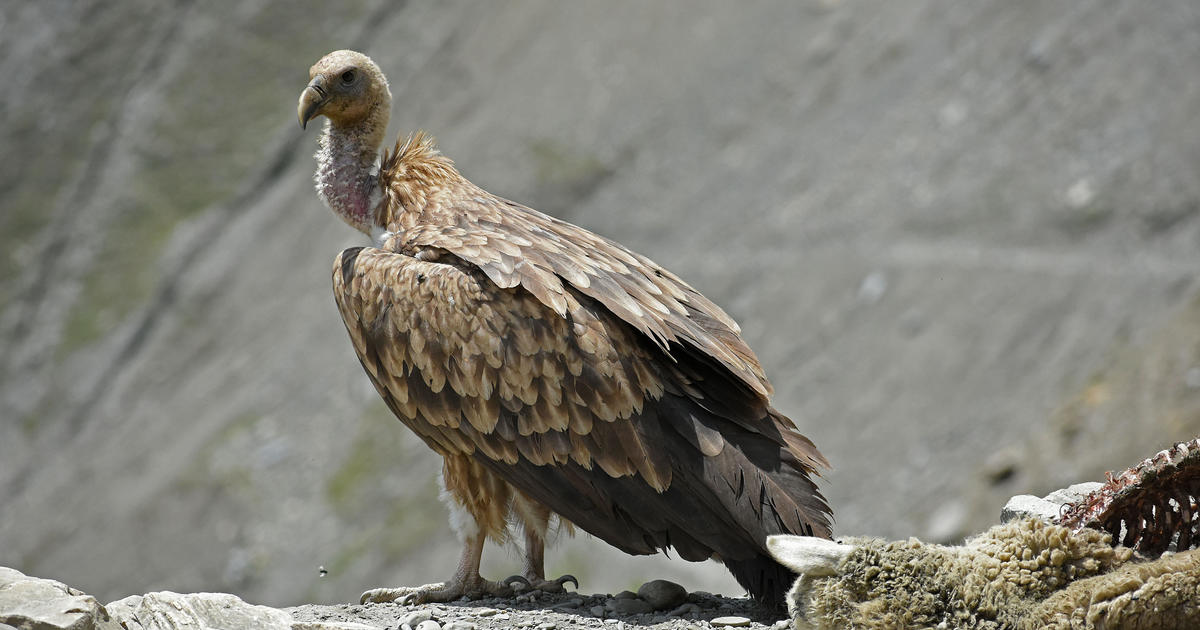
New Delhi — Scientists say Indian farmers’ eager uptake of a painkiller for their cattle in the 1990s has led to the inadvertent deaths of half of a million people and massive economic losses — not from any harm to the cattle, but from the loss of millions of vultures, scavengers that historically devoured animals’ remains before they could rot and become vectors for disease.
In early 1990s, the patent on a painkiller called diclofenac lifted, making it cheap and widely available for India’s massive agricultural sector. Farmers use it to treat a wide array of conditions in cattle. But even a small amount of the drug is fatal to vultures. Since the beginning of its widespread use in India, the domestic vulture population has dropped from a whopping 50 million to just a few thousand — and according to a study published by the American Economic Association, the impact on humans has been monumental, reflecting the vital role the scavengers play.
Vultures have been a crucial part of India’s ecosystems for centuries. According to the authors of the study, entitled “The Social Costs of Keystone Species Collapse: Evidence From The Decline of Vultures in India,” the large, homely birds are a “keystone species” — one that plays an irreplaceable role in an ecosystem.
They’re the only scavengers that feed entirely on carcasses, and they do it extremely efficiently, quickly devouring the remains and leaving little behind to spread disease. The study authors say India’s vultures would typically eat at least 50 million animal carcasses every year, before their population was decimated.
In doing so, they prevented the dead farm animals from rotting, and the deadly bacteria and other pathogens that thrive in carcasses from being transmitted into human populations.
“In a country like India with prohibitions on eating beef, most cattle end up turning into carcasses,” Anant Sudarshan, an associate professor of economics at the University of Warwick in England, who co-authored the study, told CBS News. “Vultures provide an incredible disposal service for free. … A group of vultures takes about 45 minutes to turn a cow carcass into bone.”
The vultures’ keen appetite also helped keep the populations of competing scavengers in check, such as feral dogs and rats, which can transmit rabies and a host of other diseases.
In 1994, farmers began giving diclofenac to their cattle and other livestock. The drug causes kidney failure and death in vultures that feed on the carcasses of animals given the painkiller, and the population of the birds shrank from 50 million to just 20,000 over the course of the ensuing decade alone.
Without the vultures around to do the job, farmers started disposing their dead livestock in local bodies of water, which caused water pollution — and another way for pathogens to reach humans.
Sudarshan and study co-author Eyal Frank, an environmental economist at the University of Chicago Harris School of Public Policy, examined the impact of the drastically reduced vulture population on human health by mapping vulture habitats with health data from more than 600 districts in India. They said their research shows 100,000 human deaths every year between 2000 and 2005 could be linked with the decreased vulture populations.
It also shows economic losses they estimated at $69 billion per year, largely associated with premature human deaths due to the collapse of the scavenger population.
These deaths were caused, according to their research, by the spread of diseases that a thriving vulture population would have mitigated. Stray dog populations, and with them, the spread of rabies, also increased during the timeframe, as did the amount of bacteria measured in many local water sources.
“India is now the largest center of rabies in the world, as the feral dog population has grown dramatically,” Sudarshan told CBS News.
Without a major vulture rebound, the study authors said the spread of disease and resulting deaths will only continue in the coming years, as will the costs associated with health care.
India did ban diclofenac for veterinary use in 2006, but Sudarshan said the ban needs to be enforced much more effectively. He and Eyal have called for more conservation funding to boost vulture populations, but they’ve warned that even if the Indian government does mount a major effort, it will take at least a decade for the species to bounce back to the extent required because they’re “slow reproducers.”
As an alternative to bringing the vultures back, Sudarshan said India could build a network of incinerators around the country, but the estimated cost of that is about $1 billion per year, and they would use a huge amount of energy and create considerable air pollution, which is already a major problem for India.
“So, it makes more sense to bring back the natural way of dealing with the millions of animal carcasses that India produces each year,” he said.
And he said that work must start urgently, as the “vultures began dying in the 1990s. India has not done anything three decades on.”
The government does spend about $3 million per year to save India’s native tigers. Sudarshan said while vultures may be far less of a tourist attraction, there’s a broader question about “the basis of our conservation policy.”
“Our paper shows that the cost of losing them [vultures] is about $69 billion a year, which is far higher than any benefits the tiger” brings, he said, adding: “We need to think from a cost effectiveness point of view and growth view, how should we pick species to conserve?”
“Understanding the role vultures play in human health underscores the importance of protecting wildlife – and not just the cute and cuddly,” said his co-author, Frank. “They all have a job to do in our ecosystems that impacts our lives.”
Technology
Samsung Galaxy S24 Ultra vs Apple iPhone 16 Pro Max
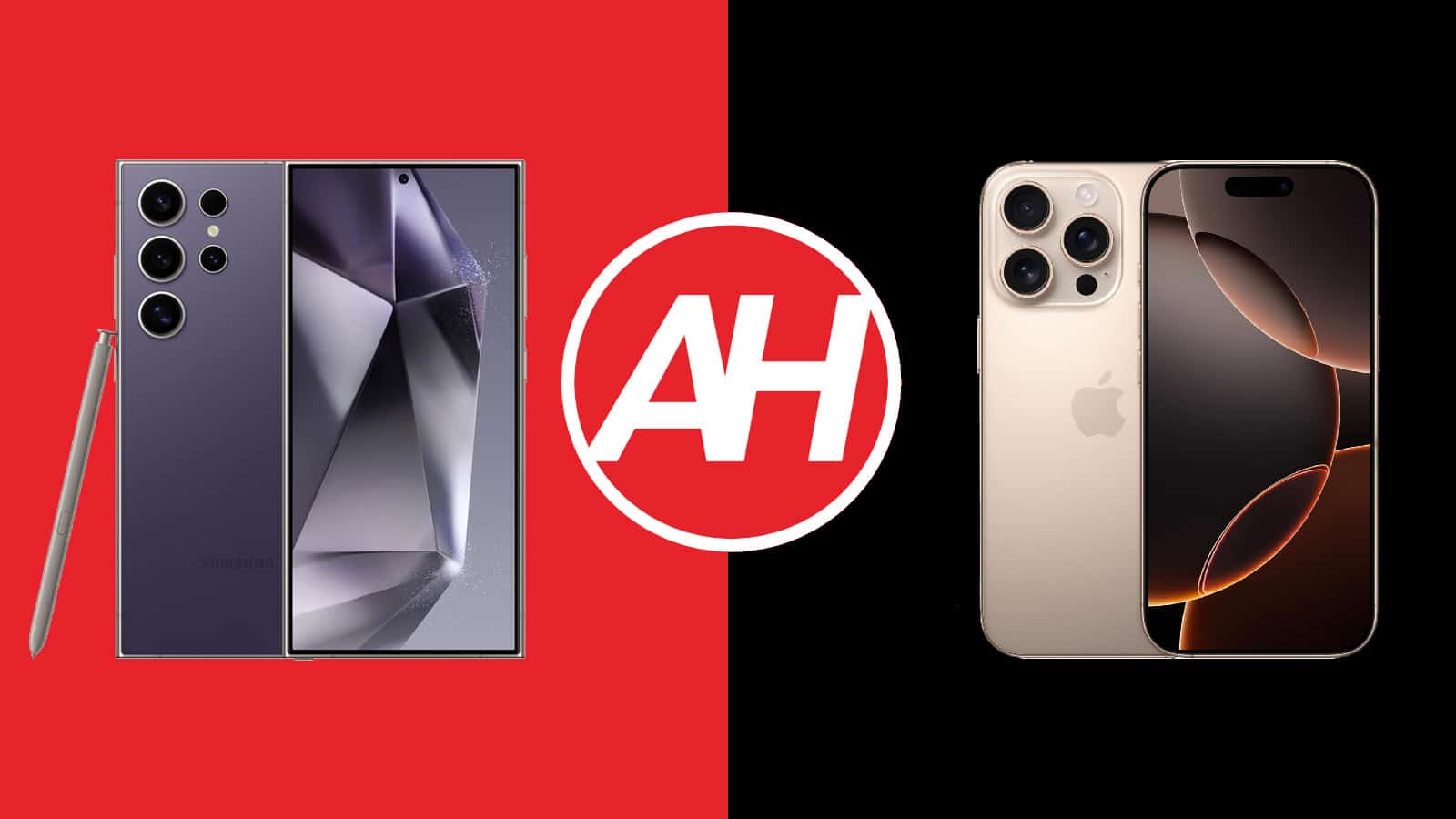
Apple has recently announced its new flagship smartphones, including the iPhone 16 Pro Max, the largest one. In this article, we’ll compare it to the best Samsung has to offer, the Samsung Galaxy S24 Ultra vs Apple iPhone 16 Pro Max. These two devices are quite different when it comes to design, but that’s not where the similarities end, not at all, quite the contrary, actually. There is plenty to talk about here.
As we usually do, we will first list the specifications of both smartphones and will then move to compare them across a number of other categories. We will compare their designs, displays, performance, battery life, cameras, and audio output. There are quite a few differences to talk about here, as the two companies have completely different approaches. Let’s get down to it, shall we?
Specs
Samsung Galaxy S24 Ultra vs Apple iPhone 16 Pro Max, respectively
– Screen size:
6.9-inch Dynamic AMOLED 2X (flat, adaptive 120Hz, HDR10+, 2,600 nits max brightness)
6.9-inch LTPO Super Retina XDR OLED ( flat, 120Hz, HDR, 2,000 nits)
– Display resolution:
3120 x 1440
2868 x 1320
– SoC:
Qualcomm Snapdragon 8 Gen 3 for Galaxy (4nm)
Apple A18 Pro (3nm)
– RAM:
12GB (LPDDR5X)
16GB (LPDDR5X)
– Storage:
256GB/512GB/1TB (UFS 4.0)
128GB/256GB/512GB/1TB (UFS 3.1)
– Rear cameras:
200MP (wide, f/1.7 aperture, OIS, multi-directional PDAF, 0.6um pixel size), 12MP (ultrawide, 120-degree FoV, f/2.2 aperture, Dual Pixel PDAF 1.4um pixel size), 10MP (telephoto, f/2.4 aperture, OIS, Dual Pixel PDAF, 1.12um pixel size, 3x optical zoom), 50MP (periscope telephoto, OIS, PDAF, 5x optical zoom)
48MP (wide, f/1.8 aperture, 1/1.28-inch sensor, 1.22um pixel size, sensor-shift OIS), 48MP (ultrawide, f/2.2 aperture, 0.7um pixel size, PDAF), 12MP (periscope telephoto, f/2.8 aperture, 1/3.06-inch sensor, 1.12um pixel size, 3D sensor-shift OIS, 5x optical zoom).
– Front cameras:
12MP (wide, f/2.2 aperture, Dual Pixel PDAF, 22mm lens)
12MP (f/1.9 aperture, PDAF, 1/3.6-inch sensor size, OIS)
– Battery:
5,000mAh
Not confirmed yet
– Charging:
45W wired, 15W wireless, 4.5W reverse wireless (charger not included)
38W wired & 25W MagSafe & Qi2 wireless, 7.5W Qi wireless, 5W reverse wired
– Dimensions:
162.3 x 79 x 8.6mm
163 x 77.6 x 8.3 mm
– Weight:
232/233 grams
227 grams
– Connectivity:
5G, LTE, NFC, Wi-Fi, USB Type-C, Bluetooth 5.3
– Security:
Ultrasonic in-display fingerprint scanner & facial scanning
Face ID (3D facial scanning)
– OS:
Android 14 with One UI 6.1
iOS 18
– Price:
$1,299+
$1,199+
– Buy:
Samsung Galaxy S24 Ultra (Best Buy)
Apple iPhone 16 Pro Max
Samsung Galaxy S24 Ultra vs Apple iPhone 16 Pro Max: Design
The moment you lay your eyes on the two phones you’ll realize how different they are. The Galaxy S24 Ultra has a flat top and bottom sides, but its left and right sides are curved. All sides of the iPhone 16 Pro Max are flat, though they are slightly rounded toward the edges. Apple did that so that the phone is more comfortable to hold. Both phones do include flat displays with cutouts on them. The Galaxy S24 Ultra has a little hole at the top of the display, while the iPhone 16 Pro Max has a rather large pill-shaped cutout.
The bezels around their displays are very thin, and uniform. All the physical buttons sit on the right-hand side of the Galaxy S24 Ultra. The iPhone 16 Pro Max has a power/lock key there and a Camera Control button. On the left, you’ll find the volume up and down buttons, and the Action Button. The two devices have considerably different camera setups on the back. Each of the Galaxy S24 Ultra’s four cameras protrudes directly from the back side. There is no dedicated camera island. The exact opposite is true for the iPhone 16 Pro Max. Its camera island sits in the top-left corner with three cameras.
Both of these phones are made out of titanium and glass. They have a titanium frame. They are both also IP68 certified for water and dust resistance. Corning’s Gorilla Armor sits on the back of Samsung’s handset. Apple’s device has a “Corning-made glass” on the back. The two phones are almost the same in terms of height, while the Galaxy S24 Ultra is slightly wider. They are almost identical in terms of thickness. Both phones are quite slippery, and the Galaxy S24 Ultra is 5 grams heavier.
Samsung Galaxy S24 Ultra vs Apple iPhone 16 Pro Max: Display
The Galaxy S24 Ultra feautres a 6.8-inch QHD+ 3120 x 1440 Dynamic LTPO AMOLED 2X display. That panel has an adaptive refresh rate of up to 120Hz. It also offers support for HDR10+ content, and its peak brightness is at 2,600 nits. The screen-to-body ratio is around 88%, while the display aspect ratio is 19.5:9. The Gorilla Armor from Corning sits on top of the display in order to protect it.

The iPhone 16 Pro Max, on the flip side, has a 6.9-inch LTPO Super Retina XDR OLED display. That display has an adaptive refresh rate of up to 120Hz. HDR10 is supported, as is Dolby Vision. The peak brightness here is 2,000 nits. The screen-to-body ratio on the iPhone 16 Pro Max is around 91%. The display aspect ratio is 19.5:9. This display is protected by the Ceramic Shield glass.
Both of these panels are great. They are vivid, bright, and have great viewing angles. The blacks are deep, and the touch response is good. Neither phone has high-frequency PWM dimming, though. The Galaxy S24 Ultra does technically get brighter, but the difference is not that big, not even in direct sunlight. What the Galaxy S24 Ultra does have an advantage with is… glare. The Gorilla Armor on top of the display is unbelievable in that regard.
Samsung Galaxy S24 Ultra vs Apple iPhone 16 Pro Max: Performance
The Snapdragon 8 Gen 3 for Galaxy fuels the Galaxy S24 Ultra. That is a 4nm chip and Qualcomm’s best one at the time of writing this. The phone is also equipped with 12GB of LPDDR5X RAM and UFS 4.0 flash storage. The iPhone 16 Pro Max is fueled by the Apple A18 Pro processor. That is a 3nm chip, by the way. The phone is also equipped with 8GB of RAM and NVMe flash storage. Neither phone offers expandable storage, by the way.
With that being said, both phones do offer great performance. Our iPhone 16 Pro (Max) review is not ready yet, but plenty of impressions are already there. In any case, both devices are very fluid in terms of day-to-day use. They can jump between apps without a problem, and getting them to slow down is a chore. They do great regardless of what you’re doing, even when it comes to a bit more advanced things such as video processing.
What about gaming, though? Well, they’re great in that regard too. Non-demanding games are, of course, not a problem, but the same goes for truly demanding titles too. Each of these two smartphones can run basically anything you can think of, and do it really well. Titles like Genshin Impact are not a problem at all. They will get warm, but not too much, and that won’t affect the gaming performance at all.
Samsung Galaxy S24 Ultra vs Apple iPhone 16 Pro Max: Battery
There is a 5,000mAh battery included inside the Galaxy S24 Ultra. Apple still didn’t confirm what battery it used in the iPhone 16 Pro Max, though. It is tipped to be a 4,676mAh unit, but we’re still not 100% sure. Apple’s handsets usually have smaller batteries compared to their Android counterparts, due to the way iOS operates, but that doesn’t mean they have inferior battery life. In fact, both of these smartphones are outstanding in that regard.
We were in awe of the Galaxy S24 Ultra’s battery life when we first reviewed it. The iPhone 16 Pro Max is showing a similar promise, actually. Getting to over 7-8 hours of screen-on-time is a possibility on both phones, though your mileage may vary, of course. That will depend on a number of factors. The point is, we were unable to drain the battery life of either phone in a day. We could have done that with constant gaming, of course, but with general heavy use, no… that didn’t happen.
What about charging? Well, the Galaxy S24 Ultra supports 45W wired, 15W wireless, and 4.5W reverse wireless charging. The iPhone 16 Pro Max, on the other hand, supports 45W wired, 25W MagSafe wireless, 15W Qi2 wireless, 7.5W Qi wireless, and 5W reverse wired charging. Do note that neither smartphone comes with a charger in the retail box, however. All you’ll get is a cable.
Samsung Galaxy S24 Ultra vs Apple iPhone 16 Pro Max: Cameras
The Samsung Galaxy S24 Ultra comes with four cameras on the back, while Apple’s handset has three rear cameras. The Galaxy S24 Ultra includes a 200-megapixel main camera, a 12-megapixel ultrawide unit (120-degree FoV), a 10-megapixel telephoto unit (3x optical zoom), and a 50-megapixel periscope telephoto camera (5x optical zoom). The iPhone 16 Pro Max, on the other hand, has a 48-megapixel main camera, a 48-megapixel ultrawide unit, and a 12-megapixel periscope telephoto camera (5x optical zoom).

The main camera sensors on the two phones are similar in terms of size. Both devices do a really good job with photos, though the results are different. Samsung’s images still look more processed, although Apple has been heading more and more in that direction. Both phones like brightening up the shadows during the day, even though the Galaxy S24 Ultra’s images do end up looking a bit more contrasty. The iPhone 16 Pro Max was more reliable for us in terms of balanced photos, for what it’s worth, but the Galaxy S24 Ultra was not far off.
Both ultrawide cameras do a good job, and keep a similar color profile to the main shooters. The results are notably different, though, as are with the main cameras. Something similar can be said for the telephoto cameras. This was a tossup between the two setups, as it all depended on what distance we were capturing. At times we preferred shots from the iPhone, but it was mostly from Samsung. Both devices also do a good job in low light and love to brighten up scenes, though Samsung more than Apple. That goes for all three cameras, by the way. The iPhone 16 Pro Max easily wins the video comparison.
Audio
Both of these smartphones include stereo speakers, and they’re really good on both ends. They’re loud enough, and the sound output is detailed enough. We did not notice noticeable distortion or anything like that.
There is no audio jack on either phone, but you can use their Type-C ports to connect your wired headphones. Alternatively, Bluetooth 5.3 is on offer for wireless audio connections… on both smartphones.
-

 Sport10 hours ago
Sport10 hours agoJoshua vs Dubois: Chris Eubank Jr says ‘AJ’ could beat Tyson Fury and any other heavyweight in the world
-

 News1 day ago
News1 day agoYou’re a Hypocrite, And So Am I
-

 News11 hours ago
News11 hours agoIsrael strikes Lebanese targets as Hizbollah chief warns of ‘red lines’ crossed
-

 Sport10 hours ago
Sport10 hours agoUFC Edmonton fight card revealed, including Brandon Moreno vs. Amir Albazi headliner
-

 Technology9 hours ago
Technology9 hours agoiPhone 15 Pro Max Camera Review: Depth and Reach
-

 Science & Environment13 hours ago
Science & Environment13 hours agoHow one theory ties together everything we know about the universe
-

 Science & Environment21 hours ago
Science & Environment21 hours agoSunlight-trapping device can generate temperatures over 1000°C
-

 News8 hours ago
News8 hours agoBrian Tyree Henry on voicing young Megatron, his love for villain roles
-

 Science & Environment24 hours ago
Science & Environment24 hours agoQuantum time travel: The experiment to ‘send a particle into the past’
-

 CryptoCurrency10 hours ago
CryptoCurrency10 hours ago2 auditors miss $27M Penpie flaw, Pythia’s ‘claim rewards’ bug: Crypto-Sec
-

 CryptoCurrency10 hours ago
CryptoCurrency10 hours agoBitcoin miners steamrolled after electricity thefts, exchange ‘closure’ scam: Asia Express
-

 CryptoCurrency10 hours ago
CryptoCurrency10 hours agoCardano founder to meet Argentina president Javier Milei
-

 CryptoCurrency10 hours ago
CryptoCurrency10 hours agoDorsey’s ‘marketplace of algorithms’ could fix social media… so why hasn’t it?
-

 CryptoCurrency10 hours ago
CryptoCurrency10 hours agoLow users, sex predators kill Korean metaverses, 3AC sues Terra: Asia Express
-

 CryptoCurrency9 hours ago
CryptoCurrency9 hours agoEthereum is a 'contrarian bet' into 2025, says Bitwise exec
-

 CryptoCurrency10 hours ago
CryptoCurrency10 hours agoArthur Hayes’ ‘sub $50K’ Bitcoin call, Mt. Gox CEO’s new exchange, and more: Hodler’s Digest, Sept. 1 – 7
-

 CryptoCurrency10 hours ago
CryptoCurrency10 hours agoTreason in Taiwan paid in Tether, East’s crypto exchange resurgence: Asia Express
-

 CryptoCurrency10 hours ago
CryptoCurrency10 hours agoLeaked Chainalysis video suggests Monero transactions may be traceable
-

 CryptoCurrency10 hours ago
CryptoCurrency10 hours agoJourneys: Robby Yung on Animoca’s Web3 investments, TON and the Mocaverse
-

 CryptoCurrency10 hours ago
CryptoCurrency10 hours agoLouisiana takes first crypto payment over Bitcoin Lightning
-

 CryptoCurrency10 hours ago
CryptoCurrency10 hours agoAre there ‘too many’ blockchains for gaming? Sui’s randomness feature: Web3 Gamer
-

 CryptoCurrency10 hours ago
CryptoCurrency10 hours agoCrypto whales like Humpy are gaming DAO votes — but there are solutions
-

 CryptoCurrency10 hours ago
CryptoCurrency10 hours agoHelp! My parents are addicted to Pi Network crypto tapper
-

 CryptoCurrency10 hours ago
CryptoCurrency10 hours ago$12.1M fraud suspect with ‘new face’ arrested, crypto scam boiler rooms busted: Asia Express
-

 CryptoCurrency10 hours ago
CryptoCurrency10 hours ago‘Everything feels like it’s going to shit’: Peter McCormack reveals new podcast
-

 Science & Environment13 hours ago
Science & Environment13 hours agoFuture of fusion: How the UK’s JET reactor paved the way for ITER
-

 CryptoCurrency10 hours ago
CryptoCurrency10 hours agoSEC sues ‘fake’ crypto exchanges in first action on pig butchering scams
-

 CryptoCurrency10 hours ago
CryptoCurrency10 hours agoFed rate cut may be politically motivated, will increase inflation: Arthur Hayes
-

 CryptoCurrency10 hours ago
CryptoCurrency10 hours agoDecentraland X account hacked, phishing scam targets MANA airdrop
-

 CryptoCurrency10 hours ago
CryptoCurrency10 hours agoCZ and Binance face new lawsuit, RFK Jr suspends campaign, and more: Hodler’s Digest Aug. 18 – 24
-

 CryptoCurrency10 hours ago
CryptoCurrency10 hours agoCertiK Ventures discloses $45M investment plan to boost Web3
-

 CryptoCurrency10 hours ago
CryptoCurrency10 hours agoMemecoins not the ‘right move’ for celebs, but DApps might be — Skale Labs CMO
-

 CryptoCurrency10 hours ago
CryptoCurrency10 hours agoTelegram bot Banana Gun’s users drained of over $1.9M
-

 CryptoCurrency10 hours ago
CryptoCurrency10 hours agoDZ Bank partners with Boerse Stuttgart for crypto trading
-

 CryptoCurrency10 hours ago
CryptoCurrency10 hours agoRedStone integrates first oracle price feeds on TON blockchain
-

 CryptoCurrency10 hours ago
CryptoCurrency10 hours agoBitcoin bulls target $64K BTC price hurdle as US stocks eye new record
-

 CryptoCurrency10 hours ago
CryptoCurrency10 hours agoSEC asks court for four months to produce documents for Coinbase
-

 CryptoCurrency10 hours ago
CryptoCurrency10 hours ago‘No matter how bad it gets, there’s a lot going on with NFTs’: 24 Hours of Art, NFT Creator
-

 CryptoCurrency10 hours ago
CryptoCurrency10 hours agoBlockdaemon mulls 2026 IPO: Report
-
Business10 hours ago
Thames Water seeks extension on debt terms to avoid renationalisation
-

 Politics9 hours ago
Politics9 hours agoI’m in control, says Keir Starmer after Sue Gray pay leaks
-
Business9 hours ago
How Labour donor’s largesse tarnished government’s squeaky clean image
-

 News8 hours ago
News8 hours ago“Beast Games” contestants sue MrBeast’s production company over “chronic mistreatment”
-

 News8 hours ago
News8 hours agoSean “Diddy” Combs denied bail again in federal sex trafficking case in New York
-

 News8 hours ago
News8 hours agoBrian Tyree Henry on his love for playing villains ahead of “Transformers One” release
-

 News8 hours ago
News8 hours agoBrian Tyree Henry on voicing young Megatron, his love for villain roles
-

 Technology3 days ago
Technology3 days agoYouTube restricts teenager access to fitness videos
-

 Science & Environment13 hours ago
Science & Environment13 hours ago‘Running of the bulls’ festival crowds move like charged particles
-

 Politics24 hours ago
Politics24 hours agoWhat is the House of Lords, how does it work and how is it changing?
-

 Politics1 day ago
Politics1 day agoKeir Starmer facing flashpoints with the trade unions
-

 Health & fitness2 days ago
Health & fitness2 days agoWhy you should take a cheat day from your diet, and how many calories to eat
-

 Science & Environment1 day ago
Science & Environment1 day agoElon Musk’s SpaceX contracted to destroy retired space station
-

 MMA10 hours ago
MMA10 hours agoUFC’s Cory Sandhagen says Deiveson Figueiredo turned down fight offer
-

 MMA10 hours ago
MMA10 hours agoDiego Lopes declines Movsar Evloev’s request to step in at UFC 307
-

 Football9 hours ago
Football9 hours agoNiamh Charles: Chelsea defender has successful shoulder surgery
-

 Football9 hours ago
Football9 hours agoSlot's midfield tweak key to Liverpool victory in Milan
-

 Technology2 days ago
Technology2 days agoCan technology fix the ‘broken’ concert ticketing system?
-

 Fashion Models9 hours ago
Fashion Models9 hours agoMiranda Kerr nude
-

 Politics9 hours ago
Politics9 hours agoLabour MP urges UK government to nationalise Grangemouth refinery
-

 Science & Environment11 hours ago
Science & Environment11 hours agoOdd quantum property may let us chill things closer to absolute zero
-

 Science & Environment13 hours ago
Science & Environment13 hours agoRethinking space and time could let us do away with dark matter
-

 Entertainment8 hours ago
Entertainment8 hours ago“Jimmy Carter 100” concert celebrates former president’s 100th birthday
-

 CryptoCurrency10 hours ago
CryptoCurrency10 hours agoSEC settles with Rari Capital over DeFi pools, unregistered broker activity
-

 News8 hours ago
News8 hours agoJoe Posnanski revisits iconic football moments in new book, “Why We Love Football”
-

 Health & fitness2 days ago
Health & fitness2 days agoWhat 10 days of a clean eating plan actually does to your body and why to adopt this diet in 2022
-

 Health & fitness2 days ago
Health & fitness2 days agoWhen Britons need GoFundMe to pay for surgery, it’s clear the NHS backlog is a political time bomb
-
Health & fitness2 days ago
Covid v flu v cold and how to tell the difference between symptoms this winter
-

 Science & Environment23 hours ago
Science & Environment23 hours agoQuantum to cosmos: Why scale is vital to our understanding of reality
-

 Science & Environment1 day ago
Science & Environment1 day agoHow to wrap your mind around the real multiverse
-

 Technology3 days ago
Technology3 days agoTrump says Musk could head ‘government efficiency’ force
-
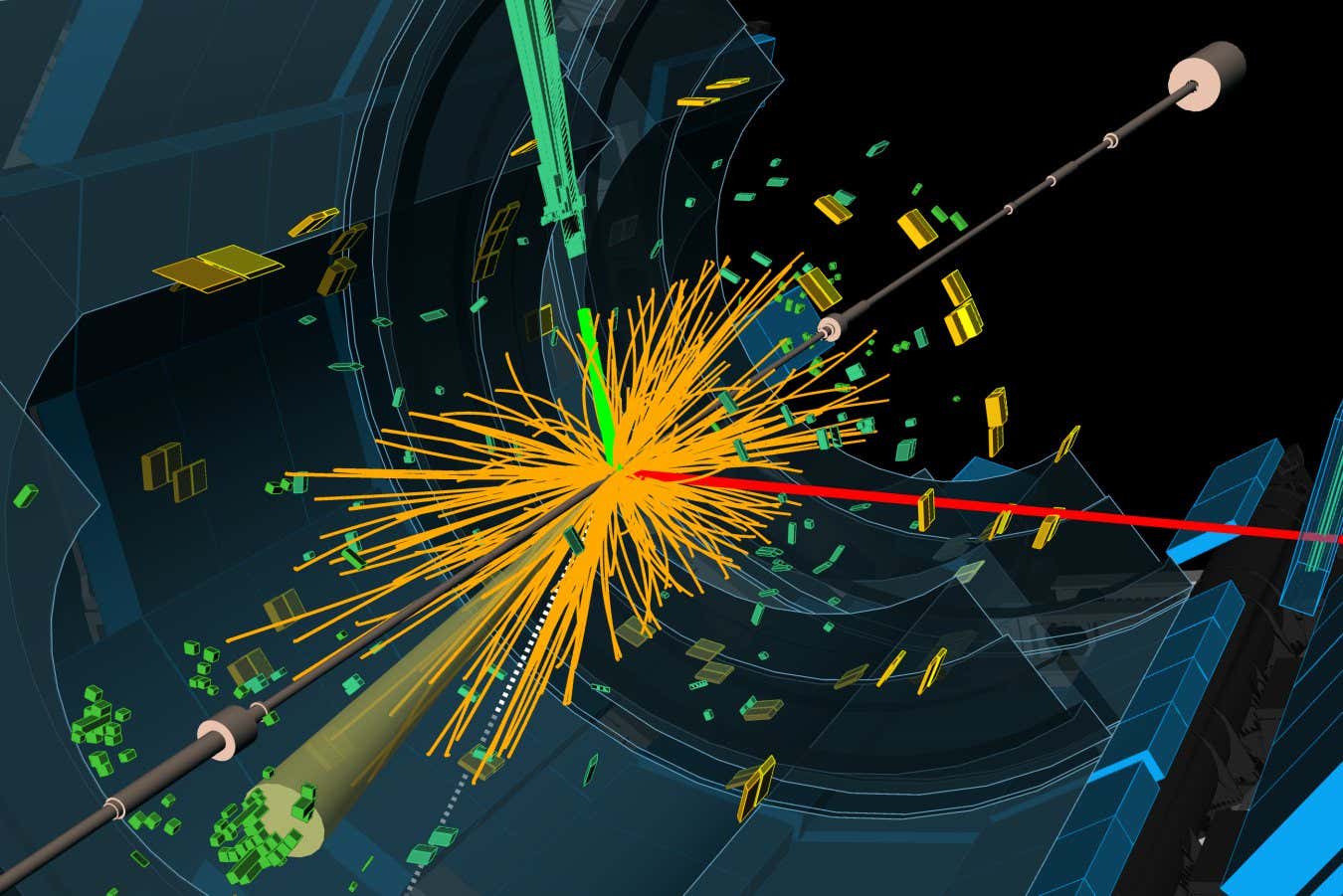
 Science & Environment2 days ago
Science & Environment2 days agoParticle physicists may have solved a strange mystery about the muon
-

 Science & Environment1 day ago
Science & Environment1 day agoTime may be an illusion created by quantum entanglement
-

 Politics23 hours ago
Politics23 hours agoIs there a £22bn ‘black hole’ in the UK’s public finances?
-

 Science & Environment22 hours ago
Science & Environment22 hours agoX-ray laser fires most powerful pulse ever recorded
-

 Science & Environment22 hours ago
Science & Environment22 hours agoHow indefinite causality could lead us to a theory of quantum gravity
-

 Science & Environment21 hours ago
Science & Environment21 hours agoDoughnut-shaped swirls of laser light can be used to transmit images
-

 Science & Environment20 hours ago
Science & Environment20 hours agoBeing in two places at once could make a quantum battery charge faster
-
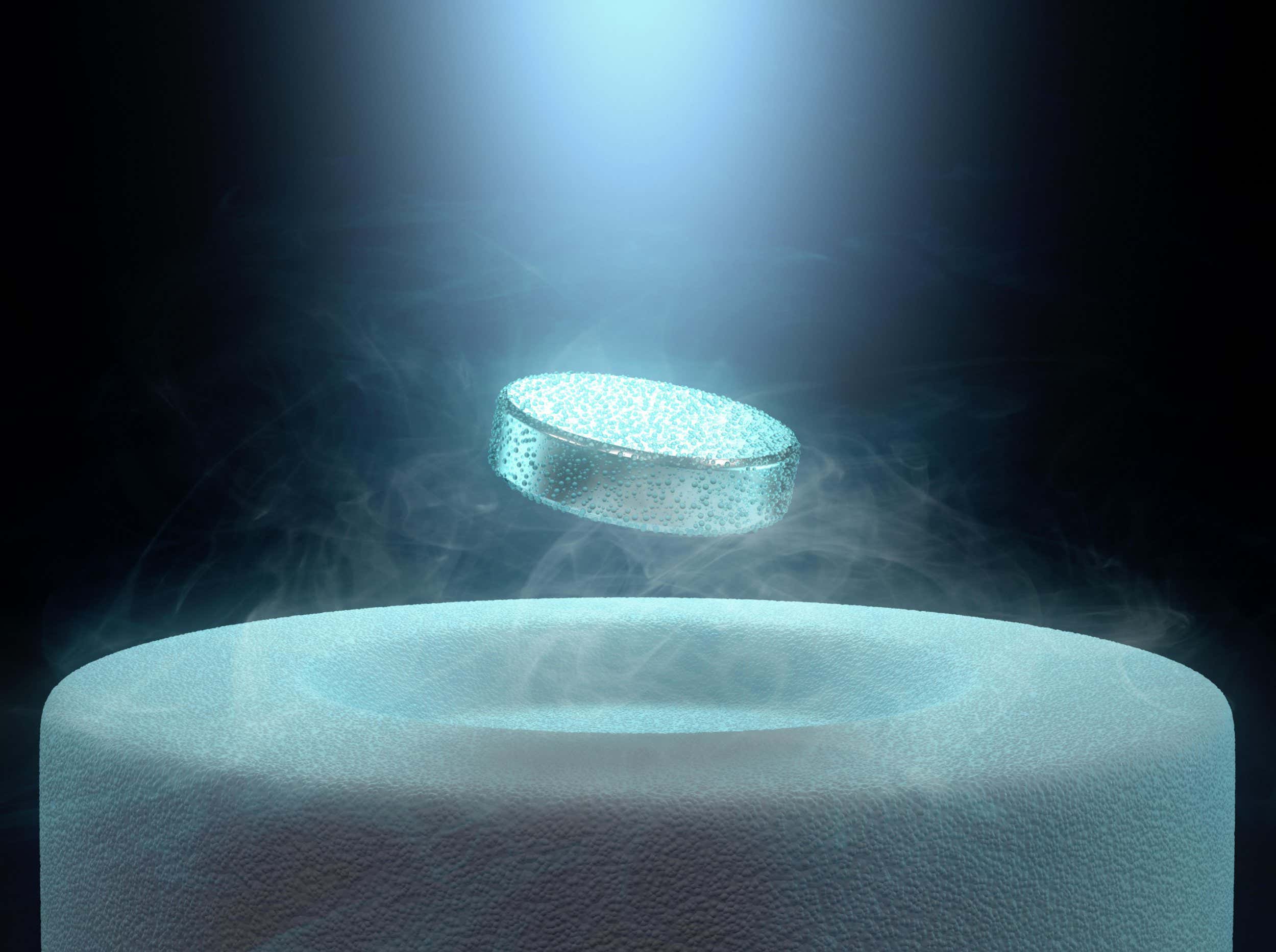
 Science & Environment20 hours ago
Science & Environment20 hours agoWhy we are finally within reach of a room-temperature superconductor
-

 Science & Environment19 hours ago
Science & Environment19 hours agoBlack holes scramble information – but may not be the best at it
-

 Science & Environment19 hours ago
Science & Environment19 hours agoThe galactic anomalies hinting dark matter is weirder than we thought
-

 Science & Environment10 hours ago
Science & Environment10 hours agoWe may have spotted a parallel universe going backwards in time
-

 CryptoCurrency10 hours ago
CryptoCurrency10 hours agoTelegram CEO cannot leave France, OpenSea receives Wells notice, and more: Hodler’s Digest, Aug. 25 – 31
-

 CryptoCurrency10 hours ago
CryptoCurrency10 hours agoFive crypto market predictions that haven’t come true — yet
-

 CryptoCurrency10 hours ago
CryptoCurrency10 hours agoSolana unveils new Seeker device, says it’s not just a ‘memecoin phone’
-

 CryptoCurrency10 hours ago
CryptoCurrency10 hours agoCrypto scammers orchestrate massive hack on X but barely made $8K
-

 CryptoCurrency10 hours ago
CryptoCurrency10 hours agoBitcoiners are ‘all in’ on Trump since Bitcoin ’24, but it’s getting risky
-

 CryptoCurrency10 hours ago
CryptoCurrency10 hours agoReal-world asset tokenization is the crypto killer app — Polygon exec
-

 Science & Environment13 hours ago
Science & Environment13 hours agoWhy we need to invoke philosophy to judge bizarre concepts in science
-

 Science & Environment13 hours ago
Science & Environment13 hours agoJupiter’s stormy surface replicated in lab
-
Politics13 hours ago
Owen Paterson loses ECHR appeal against report that preceded downfall | Owen Paterson
-

 CryptoCurrency10 hours ago
CryptoCurrency10 hours agoBinance CEO says task force is working ‘across the clock’ to free exec in Nigeria
-

 CryptoCurrency10 hours ago
CryptoCurrency10 hours agoElon Musk is worth 100K followers: Yat Siu, X Hall of Flame
-

 CryptoCurrency10 hours ago
CryptoCurrency10 hours agoBitcoin price hits $62.6K as Fed 'crisis' move sparks US stocks warning
-

 CryptoCurrency10 hours ago
CryptoCurrency10 hours agoBeat crypto airdrop bots, Illuvium’s new features coming, PGA Tour Rise: Web3 Gamer
-

 CryptoCurrency10 hours ago
CryptoCurrency10 hours agoBitcoin bull rally far from over, MetaMask partners with Mastercard, and more: Hodler’s Digest Aug 11 – 17
-

 CryptoCurrency10 hours ago
CryptoCurrency10 hours agoVonMises bought 60 CryptoPunks in a month before the price spiked: NFT Collector
-

 CryptoCurrency10 hours ago
CryptoCurrency10 hours agoVitalik tells Ethereum L2s ‘Stage 1 or GTFO’ — Who makes the cut?
-

 CryptoCurrency10 hours ago
CryptoCurrency10 hours agoEthereum falls to new 42-month low vs. Bitcoin — Bottom or more pain ahead?
-
Politics10 hours ago
The Guardian view on 10 Downing Street: Labour risks losing the plot | Editorial
-
Politics9 hours ago
‘Appalling’ rows over Sue Gray must stop, senior ministers say | Sue Gray










You must be logged in to post a comment Login